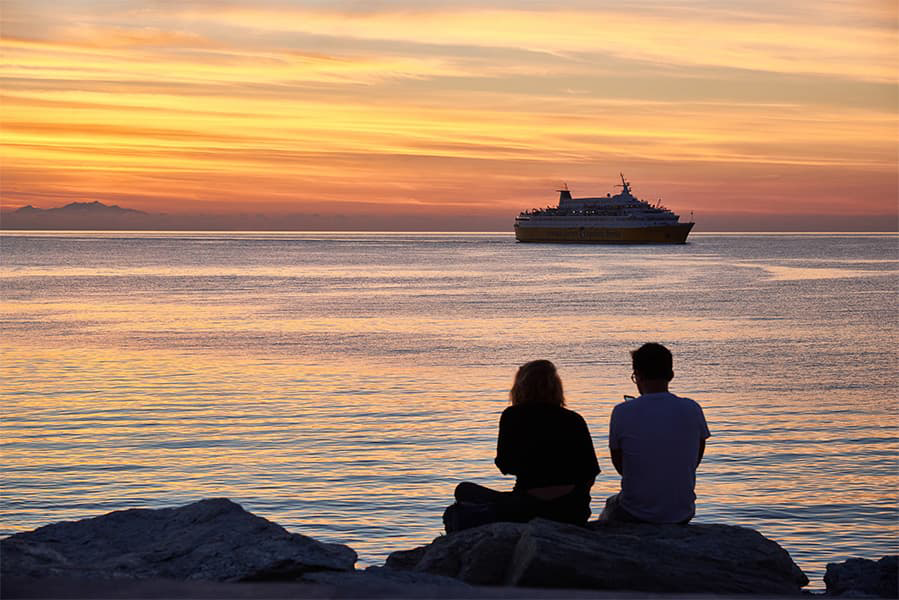Karpathos - Athens (Piraeus)
Ferries to Athens
Karpathos - Athens (Piraeus)
Ferries to Athens

provides the ferry from Karpathos to Athens (Piraeus). Karpathos Athens (Piraeus) ferries cost between 55€ and 299€, depending on ticket details. Prices exclude any service fees. Ferry timetables change seasonally, use our Deal Finder to get live pricing and availability for Karpathos Athens (Piraeus) ferries.
The first Karpathos Athens (Piraeus) ferry typically departs from Karpathos at around 10:00. The last ferry usually departs at 21:15.
The Karpathos Athens (Piraeus) ferry trip can take around 16 hours 20 minutes. The fastest sailings are approximately 13 hours 15 minutes. Sailing times can vary between ferry operators and can be impacted by weather conditions.
There is 3 weekly sailings from Karpathos to Athens (Piraeus) provided by . Timetables can change from season to season.
Karpathos Athens (Piraeus) ferry prices typically range between 55€* and 299€*. The average price is typically 233€*. The cheapest Karpathos Athens (Piraeus) ferry prices start from 55€*. The average price for a foot passenger is 89€*. The average price for a car is 233€*.
Pricing will vary depending on number of passengers, vehicle type, route and sailing times. Pricing is taken from searches over last 30 days and exclusive of service fees, last updated 1 December 2025.
The distance between Karpathos to Athens (Piraeus) is approximately 290.1 miles (466.9km) or 252.1 nautical miles.
No, ferry operators currently do not allow cars to travel on sailings between Karpathos and Athens (Piraeus).
No, currently ferry operators do not allow foot passengers to sail between Karpathos and Athens (Piraeus).
Pets are currently not allowed on board the ferries from Karpathos to Athens (Piraeus).
More routes than anyone else.

Compare fares, times & routes in one place.
Change plans easily with flexi tickets.

Book e-tickets & manage trips in-app.
Live ship tracking & real-time updates.

Top-rated customer support when you need it.
Located in the Dodecanese group of the islands, the Greek island of Karpathos lies in the eastern Aegean Sea and is the second largest of the Dodecanese islands. Its relatively remote location has meant that the island has managed to retain many of its traditions and customs, traditional dress and dialect which resembles the dialect of the Greek island of Crete and of Cyprus.
The island's north has many rugged mountains but in contrast the south of the island is quite fertile, and visitors can see many wildflowers during the winter and spring. The island's coastal areas are characterised by beautiful beaches which tend to be quiet and are often nestled between the island's cliffs. The island's beaches differ quite markedly from each other which is dependent on the beach's location. The east coast beaches tend to be smaller and gravelly, but tend not to be too windy. The beaches on the south coast tend to have fine white sand as do the beaches on the island's west coast, although these are the most exposed to the Meltemi and are only really available when the wind isn't too strong. Finally, the beaches in the north are difficult to get to and are really only accessible by sea or by jeep.
Ferries from Karpathos depart to the ports of Piraeus, Rhodes, Heraklion, Milos, Anafi, Sitia, Santorini, Chalki and Kasos.
The Greek city and port of Piraeus is one of the largest ports in the whole of the Mediterranean, and the third largest in the world, and has become a major hub for the ferry network that spans the Aegean Sea. Piraeus is an important city in its own right despite the fact that it is frequently considered to be a suburb of Athens, the Greek capital, which is only a very short distance away. Despite its proximity to Athens, Piraeus' waterfront has its own distinct appearance and visitors will see that the most appealing parts of the city are located around its eastern quarter, alongside both Mikrolimano Harbour and Zea Marina. A popular event in Piraeus is the Ecocinema International Film Festival which is held annually in late February and is where a number of films are screened at the Atticon Cinema and the Cineac Cinema, which are both located in the city's Town Hall Square.
Full of restaurants, bars and nightclubs, the waterfront district was greatly redeveloped in time for the Athens Olympics and as a result a new harbour front promenade was created that is lined with trees and passes the medieval city walls. The walls serve as a reminder and as an insight into the city's rich past.